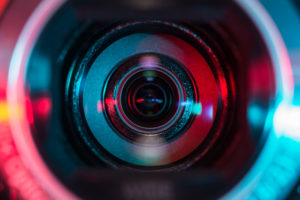Psychic Distance: What is it?
Psychic Distance. Is it some kind of kinetic power from a dystopian YA novel? Is it something that a tarot card reader would charge you an extra $10 to read? A measurement of how far you are from a psychic at any given time? It’s actually a technical writing term. When it comes to the logistics of writing, most people solely focus on continuity in terms of point of view, tense, and pacing. But there’s actually another facet to writing consistency that most writers don’t even know about. It’s called Psychic Distance.

Even explaining the term Psychic Distance can be difficult because it’s a very specific concept. Think of your book like you’re making a movie. In a movie, your POV would be the perspective of the main character and tense would be the setting (I.E. time, date, location, etc). If your book was a movie, Psychic Distance would be how close and far away your ‘camera’ is from your protagonist.
Still confused? Let me give you an example. In a movie, it would be very jarring to go from an aerial shot of a city directly to a shot of a character’s eyes opening. Because of this, filmmakers use transition shots. They’ll show a specific building, followed by the inside of an apartment, a wide shot of a character asleep in bed, and then the character’s eyes opening.
We’re meant to do this with writing as well. Some writers will make the mistake of writing something along the lines of “The moon was full and yellow, looming over the dark green trees in the forest. Oh no. What did you get yourself into this time, Jules?”

See the problem? The transition from describing a scene to a strongly voiced character thought is extremely jarring. Readers need the same type of transition you would find in a film. Otherwise, you leave a reader confused and wondering, “Where is Jules? What is she doing? Why is she thinking this?” You need a transition to give purpose to the thought.
Try using these transition steps:
1) The moon was full and yellow, looming over the dark green trees in the forest.
2) The young woman finally stopped running and leaned over a nearby tree. Julie’s hands were shaking and she could taste the blood in her mouth.
3) She closed her eyes and rested her hand on her forehead, contemplating her own stupidity.
4) It was actually almost impressive that someone could be this incredibly stupid.
5) Oh no. What did you get yourself into this time, Jules?

Could you feel yourself zooming in on Jules that time? First, we have a wide shot of the scene. Next, we have an action shot to establish what Julie is doing and to even give the reader a hint of the current conflict. Then we get a little closer with an action leading us to the summation of a thought she’s having from a distant third person POV.
Possibly most importantly, we have the sentence, “It was actually almost impressive that someone could be this incredibly stupid.” This is the most important transition to have here because of the language. The language, “incredibly stupid,” is no longer information that the narrator is giving us about Julie. The narrator of the story doesn’t think Julie is incredibly stupid- Julie thinks this of herself. The narrator uses language coming directly from Julie (that isn’t quite a direct thought) as a tool to brace the reader to go into the mind of the character. And, finally, we’re physically in the mind of the protagonist. The transition is even smoother when you begin each sentence with what the previous ended with (I.E. a wide shot, an action, a thought). Then, transition to the next step by the end of that sentence.
Here’s a cheat on how to do it:
1) Wide shot of the scene.
1) Begin with a slightly closer shot of the character, end with a character action.
2) Begin with a character action, end with a distant third person thought.
3) Begin with a distant third person thought, end with an almost voiced thought.
4) Directly voiced thought.
Similar to a film, these transition shots in books are crucial. It’s the difference between leaving your readers engaged and leaving them scratching their heads. Psychic Distance is a crucial part of writing consistency, even if it does sound like your college roommate’s cover band.
